《计算机图形学 C语言版 第2版》
| 作者 | (美)M.Pauline Baker 编者 |
|---|---|
| 出版 | 北京:清华大学出版社 |
| 参考页数 | 666 |
| 出版时间 | 1998(求助前请核对) 目录预览 |
| ISBN号 | 7302027714 — 求助条款 |
| PDF编号 | 87619538(仅供预览,未存储实际文件) |
| 求助格式 | 扫描PDF(若分多册发行,每次仅能受理1册) |
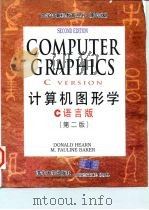
1 A Survey of Computer Graphics2
1-1 Computer-Aided Design4
1-2 Presentation Graphics11
1-3 Computer Art13
1-4 Entertainment18
1-5 Education and Training21
1-6 Visualization25
1-7 Image Processing32
1-8 Graphical User Interfaces34
2 Overview of Graphics Systems35
2-1 Video Display Devices36
Refresh Cathode-Ray Tubes37
Raster-Scan Displays40
Random-Scan Displays41
Color CRT Monitors42
Direct-View Storage Tubes45
Flat-Panel Displays45
Three-Dimensional Viewing Devices49
Stereoscopic and Virtual-Reality Systems50
2-2 Raster-Scan Systems53
Video Controller53
Raster-Scan Display Processor55
2-3 Random-Scan Systems56
2-4 Graphics Monitors and Workstations57
2-5 Input Devices60
Keyboards61
Mouse61
Joysticks63
Trackball and Spaceball63
Data Glove64
Digitizers64
Image Scanners67
Touch Panels68
Light Pens70
Voice Systems70
2-6 Hard-Copy Devices72
2-7 Graphics Software75
Coordinate Representations76
Graphics Functions77
Software Standards78
PHIGS Workstations79
Summary79
Exercises81
References81
3 Output Primitives83
3-1 Points and Lines84
3-2 Line-Drawing Algorithms86
DDA Algorithm87
Bresenham s Line Algorithm88
Parallel Line Algorithms92
3-3 Loading the Frame Buffer94
3-4 Line Function95
3-5 Circle-Generating Algorithms97
Properties of Circles97
Midpoint Circle Algorithm98
3-6 Ellipse-Generating Algorithms102
Properties of Ellipses102
Midpoint Ellipse Algorithm103
3-7 Other Curves110
Conic Sections110
Polynomials and Spline Curves112
3-8 Parallel Curve Algorithms112
3-9 Curve Functions113
3-10 Pixel Addressing and Object Geometry114
Screen Grid Coordinates114
Maintaining Geometric Properties of Displayed Objects114
3-11 Filled-Area Primitives117
Scan-Line Polygon Fill Algorithm117
Inside-Outside Tests125
Scan-Line Fill of Curved Boundary Areas126
Boundary-Fill Algorithm127
Flood-Fill Algorithm130
3-12 Fill-Area Functions131
3-13 Cell Array131
3-14 Character Generation131
Summary134
Applications136
References140
Exercises140
4 Attributes of Output Primitives143
4-1 Line Attributes144
Line Type144
Line Width146
Pen and Brush Options149
Line Color149
4-2 Curve Attributes152
4-3 Color and Grayscale Levels154
Color Tables155
Grayscale157
4-4 Area-Fill Attributes158
Fill Styles158
Pattern Fill159
Soft Fill162
4-5 Character Attributes163
Text Attributes163
Marker Attributes167
4-6 Bundled Attributes168
Bundled Line Attributes168
Bundled Area-Fill Attributes169
Bundled Text Attributes169
4-7 Inquiry Functions170
Bundled Marker Attributes170
4-8 Antialiasing171
Supersampling Straight Line Segments172
Pixel-Weighting Masks174
Area Sampling Straight Line Segments174
Filtering Techniques174
Pixel Phasing175
Compensating for Line Intensity Differences175
Antialiasing Area Boundaries176
Summary178
References180
Exercises180
5 Two-Dimensional Geometric Transformations183
5-1 Basic Transformations184
Translation184
Rotation186
Scaling187
5-2 Matrix Representations and Homogeneous Coordinates188
5-3 Composite Transformations191
Translations191
Rotations191
Scalings192
General Pivot-Point Rotation192
General Fixed-Point Scaling193
General Scaling Directions193
Concatenation Properties194
General Composite Transformations and Computational Efficiency195
5-4 Other Transformations201
Reflection201
Shear203
5-5 Transformations Between Coordinate Systems205
5-6 Affine Transformations208
5-7 Transformation Functions208
5-8 Raster Methods for Transformations210
Summary212
References213
Exercises213
6 Two-Dimensional Viewing216
6-1 The Viewing Pipeline217
6-2 Viewing Coordinate Reference Frame219
6-3 Window-to-Viewport Coordinate Transformation220
6-4 Two-Dimensional Viewing Functions222
6-5 Clipping Operations224
6-7 Line Clipping225
6-6 Point Clipping225
Cohen-Sutherland Line Clipping226
Liang-Barsky Line Clipping230
Nicholl-Lee-Nicholl Line Clipping233
Line Clipping Using Nonrectangular Clip Windows235
Splitting Concave Polygons235
6-8 Polygon Clipping237
Sutherland-Hodgeman Polygon Clipping238
Weiler-Atherton Polygon Clipping242
Other Polygon-Clipping Algorithms243
6-9 Curve Clipping244
6-10 Text Clipping244
6-11 Exterior Clipping245
Summary245
Exercises248
References248
7 Structures and Hierarchical Modeling250
7-1 Structure Concepts250
Basic Structure Functions250
Setting Structure Attributes253
7-2 Editing Structures254
Structure Lists and the Element Pointer255
Setting the Edit Mode256
Inserting Structure Elements256
Replacing Structure Elements257
Deleting Structure Elements257
Labeling Structure Elements258
Copying Elements from One Structure to Another260
7-3 Basic Modeling Concepts260
Model Representations261
Symbol Hierarchies262
Modeling Packages263
7-4 Hierarchical Modeling with Structures265
Local Coordinates and Modeling Transformations265
Modeling Transformations266
Structure Hierarchies266
Summary268
References269
Exercises269
8 Graphical User Interfaces and Interactive Input Methods271
8-1 The User Dialogue272
Windows and Icons273
Accommodating Multiple Skill Levels273
Backup and Error Handling274
Consistency274
Minimizing Memorization274
Feedback275
8-2 Input of Graphical Data276
Logical Classification of Input Devices276
Locator Devices277
Stroke Devices277
String Devices277
Valuator Devices277
Choice Devices279
Pick Devices279
8-3 Input Functions281
Input Modes281
Locator and Stroke Input in Request Mode282
Request Mode282
String Input in Request Mode283
Valuator Input in Request Mode284
Choice Input in Request Mode284
Pick Input in Request Mode284
Sample Mode285
Event Mode285
Concurrent Use of Input Modes287
8-4 Initial Values for Input-Device Parameters287
8-5 Interactive Picture-Construction Techniques288
Basic Positioning Methods288
Constraints288
Grids289
Rubber-Band Methods290
Gravity Field290
Dragging291
Painting and Drawing291
8-6 Virtual-Reality Environments292
Summary293
References294
Exercises294
9 Three-Dimensional Concepts296
9-1 Three-Dimensional Display Methods297
Parallel Projection298
Perspective Projection299
Depth Cueing299
Visible Line and Surface Identification300
Surface Rendering300
Exploded and Cutaway Views300
Three-Dimensional and Stereoscopic Views300
9-2 Three-Dimensional Graphics Packages302
10 Three-Dimensional Object Representations304
10-1 Polygon Surfaces305
Polygon Tables306
Plane Equations307
Polygon Meshes309
10-2 Curved Lines and Surfaces310
10-3 Quadric Surfaces310
Sphere311
Ellipsoid311
Torus311
10-4 Superquadrics312
Superellipse312
Superellipsoid313
10-5 Blobby Objects314
10-6 Spline Representations315
Interpolation and Approximation Splines316
Parametric Continuity Conditions317
Geometric Continuity Conditions318
Spline Specifications319
10-7 Cubic Spline Interpolation Methods320
Natural Cubic Splines321
Hermite Interpolation322
Cardinal Splines323
Kochanek-Bartels Splines325
10-8 Bézier Curves and Surfaces327
Bézier Curves327
Properties of Bézier Curves329
Design Techniques Using Bézier Curves330
Cubic Bézier Curves331
Bézier Surfaces333
10-9 B-Spline Curves and Surfaces334
B-Spline Curves335
Uniform,Periodic B-Splines336
Cubic,Periodic B-Splines339
Open,Uniform B-Splines341
Nonuniform B-Splines344
B-Spline Surfaces344
10-10 Beta-Splines345
Beta-Spline Continuity Conditions345
Cubic,Periodic Beta-Spline Matrix Representation346
10-11 Rational Splines347
10-12 Conversion Between Spline Representations349
Forward-Difference Calculations351
10-13 Displaying Spline Curves and Surfaces351
Horner s Rule351
Subdivision Methods353
10-14 Sweep Representations355
10-15 Constructive Solid-Geometry Methods356
10-16 Octrees359
10-17 BSP Trees362
10-18 Fractal Ceometry Methods362
Fractal-Generation Procedures363
Classification of Fractals364
Fractal Dimension364
Geometric Construction of Deterministic Self-Similar Fractals367
Geometric Construction of Statistically Self-Similar Fractals369
Affine Fractal-Construction Methods372
Random Midpoint-Displacement Methods373
Controlling Terrain Topography376
Self-Squaring Fractals378
Self-Inverse Fractals385
10-19 Shape Grammars and Other Procedural Methods387
10-20 Particle Systems390
10-21 Physically Based Modeling393
10-22 Visualization of Data Sets395
Visual Representations for Scalar Fields395
Visual Representations for Vector Fields400
Visual Representations for Tensor Fields401
Visual Representations for Multivariate Data Fields402
References404
Exercises404
Summary404
11 Three-Dimensional Geometric and Modeling Transformations407
11-1 Translation408
11-2 Rotation409
Coordinate-Axes Rotations409
General Three-Dimensional Rotations413
Rotations with Quaternions419
11-3 Scaling420
11-4 Other Transforrnations422
Reflections422
Shears423
11-5 Composite Transformations423
11-6 Three-Dimensional Transformation Functions425
11-7 Modeling and CoordinateTransformations426
References429
Summary429
Exercises430
12 Three-Dimensional Viewing431
12-1 Viewing Pipeline432
12-2 Viewing Coordinates433
Specifying the View Plane433
Transformation from World to Viewing Coordinates437
12-3 Projections438
Parallel Projections439
Perspective Projections443
12-4 View Volumes and General Projection Transformations447
General Parallel-Projection Transformations452
General Perspective-Projection Transformations454
12-5 Clipping456
Normalized View Volumes458
Viewport Clipping460
Clipping in Homogeneous Coordinates461
12-6 Hardware Implementations463
12-7 Three-Dimensional Viewing Functions464
Summary467
References468
Exercises468
13 Visible-Surface Detection Methods469
13-1 Classification of Visible-Surface Detection Algorithms470
13-2 Back-Face Detection471
13-3 Depth-Buffer Method472
13-4 A-Buffer Method475
13-5 Scan-Line Method476
13-6 Depth-Sorting Method478
13-7 BSP-Tree Method481
13-8 Area-Subdivision Method482
13-9 Octree Methods485
13-10 Ray-Casting Method487
13-11 Curved Surfaces488
Curved-Surface Representations488
Surface Contour Plots489
13-12 Wireframe Methods490
13-13 Visibility-Detection Functions490
Summary491
References492
Exercises492
14 Illumination Models and Surface-Rendering Methods494
14-1 Ligth Sources496
Ambient Light497
Diffuse Reflection497
14-2 Basic Illumination Models497
Specular Reflection and the Phong Model500
Combined Diffuse and Specular Reflections with Multiple Light Sources504
Warn Model504
Intensity Attenuation505
Color Considerations507
Transparency508
Shadows511
14-3 Displaying Light Intensities511
Assigning Intensity Levels512
Gamma Correction and Video Lookup Tables513
Displaying Continuous-Tone Images515
14-4 Halftone Patterns and Dithering Techniques516
Halftone Approximations516
Dithering Techniques519
Constant-Intensity Shading522
14-5 Polygon-Rendering Methods522
Gouraud Shading523
Phong Shading525
Fast Phong Shading526
14-6 Ray-Tracing Methods527
Basic Ray-Tracing Algorithm528
Ray-Surface Intersection Calculations531
Reducing Object-Intersection Calculations535
Space-Subdivision Methods535
Antialiased Ray Tracing538
Distributed Ray Tracing540
14-7 Radiosity Lighting Model544
Basic Radiosity Model544
Radiosty Method549
Progressive Refinement Radiosity Method549
14-8 Environment Mapping552
14-9 Adding Surface Detail553
Modeling Surface Detail with Polygons553
Texture Mapping554
Procedural Texturing Methods556
Bump Mapping558
Frame Mapping559
Summary560
References561
Exercises562
15 Color Models and Color Applications564
15-1 Properties of Light565
15-2 Standard Primaries and the Chromaticity Diagram568
CIE Chromaticity Diagram569
XYZ Color Model569
15-3 Intuitive Color Concepts571
15-4 RGB Color Model572
15-5 YIQ Color Model574
15-6 CMY Color Model574
15-7 HSV Color Model575
15-9 Conversion Between HSV and RGB Models578
15-9 HLS Color Model579
15-10 Color Selection and Applications580
Summary581
References581
Exercises582
16 Computer Animation583
16-1 Design of Animation Sequences584
16-3 Raster Animations586
16-2 General Computer-Animation Functions586
16-4 Computer-Animation Languages587
16-5 Key-Frame Systems588
Morphing588
Simulating Accelerations591
16-6 Motion Specifications594
Direct Motion Specification594
Goal-Directed Systems595
Kinematics and Dynamics595
Summary596
References597
Exercises597
A Mathematics for Computer Graphics599
Two-Dimensional Cartesian Reference Frames600
A-1 Coordinate -Reference Frames600
Polar Coordinates in the xy Plane601
Three-Dimensional Cartesian Reference Frames602
Three-Dimensional Curvilinear Coodinate Systems602
Solid Angle604
A-2 Points and Vectors605
Vector Addition and Scalar Multiplication607
Scalar Product of Two Vectors607
Vector Product of Two Vectors608
A-3 Basis Vectors and the Metric Tensor609
Orthonormal Basis609
Metric Tensor610
A-4 Matrices611
Matrix Multiplication612
Scalar Multiplication and Matrix Addition612
Matrix Transpose613
Determinant of a Matrix613
Matrix Inverse614
A-5 Complex Numbers615
A-6 Quaternions617
A-7 Nonparametric Representations618
A-8 Parametric Representations619
A-9 Numerical Methods620
Solving Sets of Linear Equations620
Finding Roots of Nonlinear Equations621
Evaluating Integrals622
Fitting Curves to Data Sets625
BIBLIOGRAPHY626
INDEX639
1998《计算机图形学 C语言版 第2版》由于是年代较久的资料都绝版了,几乎不可能购买到实物。如果大家为了学习确实需要,可向博主求助其电子版PDF文件(由(美)M.Pauline Baker 1998 北京:清华大学出版社 出版的版本) 。对合法合规的求助,我会当即受理并将下载地址发送给你。
高度相关资料
-
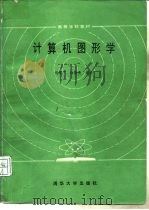
- 计算机图形学
- 1986 北京:清华大学出版社
-

- 计算机图形学 (第三版)
- 1998
-

- 高等学校教材 计算机操作系统
- 1997
-

- 计算机图形学(新版)
- 1995
-
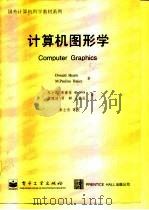
- 计算机图形学
- 1998年04月第1版 电子工业出版社
-

- 高级语言C++程序设计 第2版
- 1999 北京:高等教育出版社
-
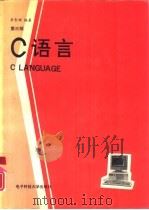
- C语言 第3版
- 1991 成都:电子科技大学出版社
-
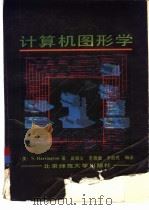
- 计算机图形学
- 1985 北京:北京师范大学出版社
-

- 计算机图形学
- 1988 杭州:浙江大学出版社
-
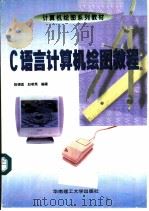
- C语言计算机绘图教程
- 1998 广州:华南理工大学出版社
-
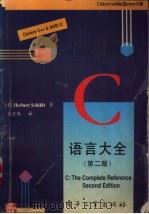
- C语言大全 第2版
- 1995 北京:电子工业出版社
-

- 计算机图形学
- 1989 成都:四川科学技术出版社
-

- 计算机图形学
- 1990 北京:北京航空航天大学出版社
-

- 计算机图形学
- 1996 广州:中山大学出版社
提示:百度云已更名为百度网盘(百度盘),天翼云盘、微盘下载地址……暂未提供。➥ PDF文字可复制化或转WORD
